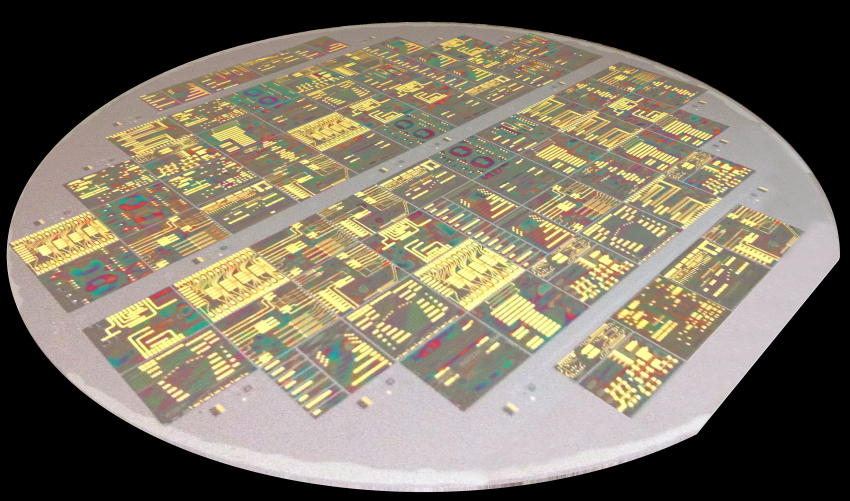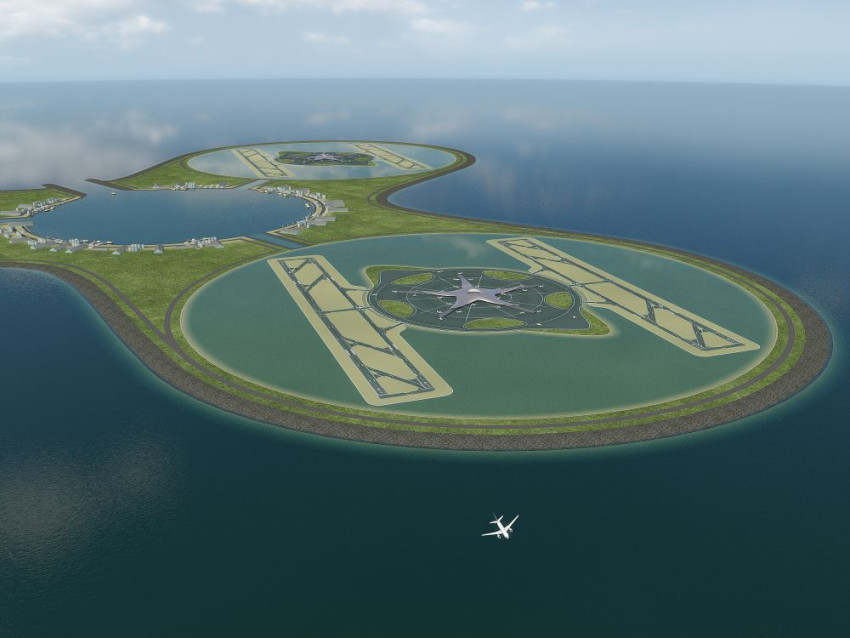
Hydraulic engineers focus on the North Sea
Considering rising sea levels, an overcrowded Schiphol and renewable energy demand, Dutch hydraulic engineers increasingly see the North Sea as their new working area, as was clear last week at the Waterbouwdag conference for hydraulic engineers.
Is the North Sea the new Wild West that is set to conquer our country under the direction of marine engineers? Well, that was definitely the impression given yesterday during the oversubscribed parallel session 'Building on the North Sea', part of the Waterbouwdag, at which a manifesto of the same name was adopted by oral vote.
Serious undertones
But it was all done a little bit tongue-in-cheek: ‘We specifically wanted to avoid nuance,’ says presenter and water manager Joris Escher. Yet the subject did have a serious undertone: the Dutch population is growing towards 20 million people, one million extra homes are needed in the Randstad (a conurbation in the north-western Netherlands), Schiphol is bursting at the seams, and more and more people are suffering from aircraft noise. What's more, demand for renewable energy is increasing, and the North Sea represents an excellent source area, and – last but not least – we could be facing sea levels that are higher and rising faster in the future, so we'll have to come up with something in the North Sea unless we're willing to withdraw our land to behind Amersfoort (read also ‘Accelerated sea-level rise poses a major challenge to the Dutch delta’).
The tone was set with the presentation of four ideas to rouse the imagination.
Nova Delta

Consider the sea as an opportunity for new developments, such as generating energy with wind farms, seaweed farming and suchlike. Make the North Sea part of a new spatial plan for our delta – that's the idea behind Nova Delta. The concept was developed by Topsectoren Water & Maritiem, a public-private partnership, and at the time a short video presentation was created about it. This idea was presented by Henk Nieboer from Witteveen+Bos engineering consultancy and Director of EcoShape.
Airport at sea

It's an old idea: move Schiphol to the sea. The most appealing concept for this was developed in the nineties by the OMA consultancy of Rem Koolhaas. Yet, as with all previous plans for an airport at sea, it was put on ice. But if it was purely up to the marine engineers, the plan would be on the agenda once again. Dutch Minister of Infrastructure and Water Management, Cora van Nieuwenhuizen, has announced a new study into an airport at sea. This idea was presented by Hendrik Postma from Topsector Water.
Dynamic tidal power
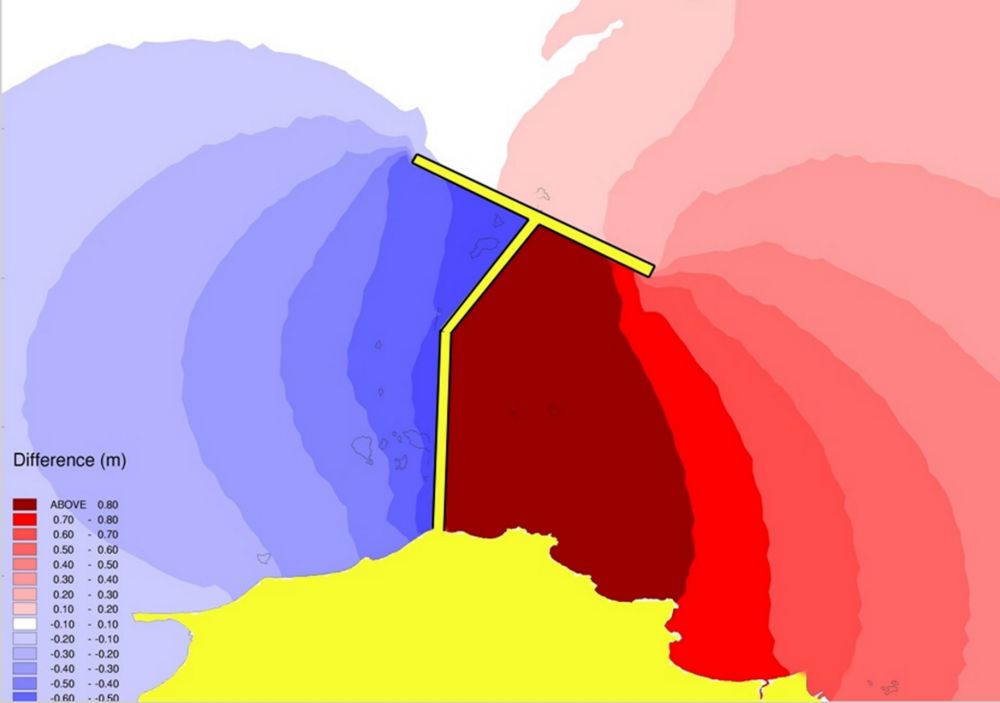
Dynamic Tidal Power could supply a third of the total electricity production, purely based on tidal flows. These are piers running for miles perpendicular to the coast. Because tidal flows move along the coast, this creates a gradient behind the piers. You could see them as a sort of temporary reservoirs. If the water then flows through turbines, they will generate power four times a day. According to Kees Hulsbergen from Dynamic Tidal Power, this electricity can be supplied at €0.07 / kWh, and the long piers require a factor of 20 less space than wind farms per unit of power generated.
‘Haakse Zeedijk’
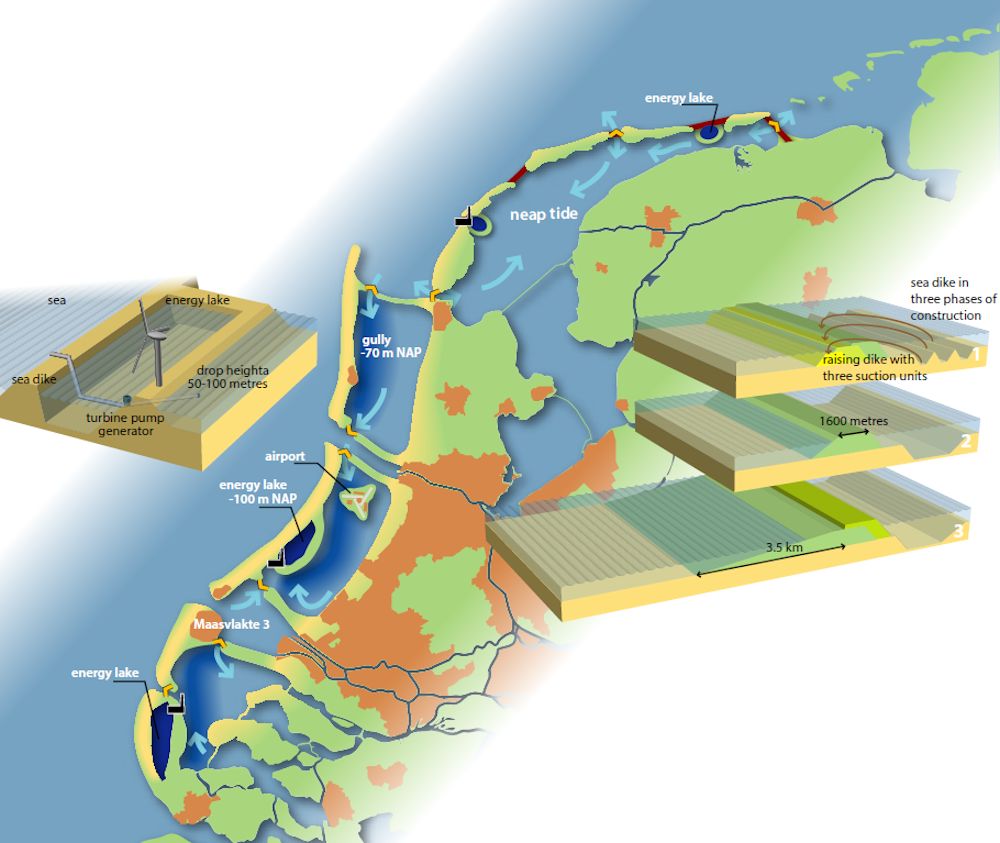
If we want to keep the Netherlands liveable at a sea-level rise of more than 5 to 8 metres, then one of the options is a long sea dike at 25 kilometres from the coast, from Den Helder all the way to Walcheren in the Province of Zeeland, with two shipping lanes at Rotterdam and IJmuiden and sea locks or pumps to transport the water from the rivers to the sea. This protects the hinterland and creates new land for a wide range of activities, including a possible airport, industry, and residential areas, as well as nature and recreation. This idea was presented by Dick Butijn from the Haakse Zeedijk.
Manifesto
The idea to start building in the North Sea was established in a manifesto of the same name, illustrated by JAM Visual Thinking.
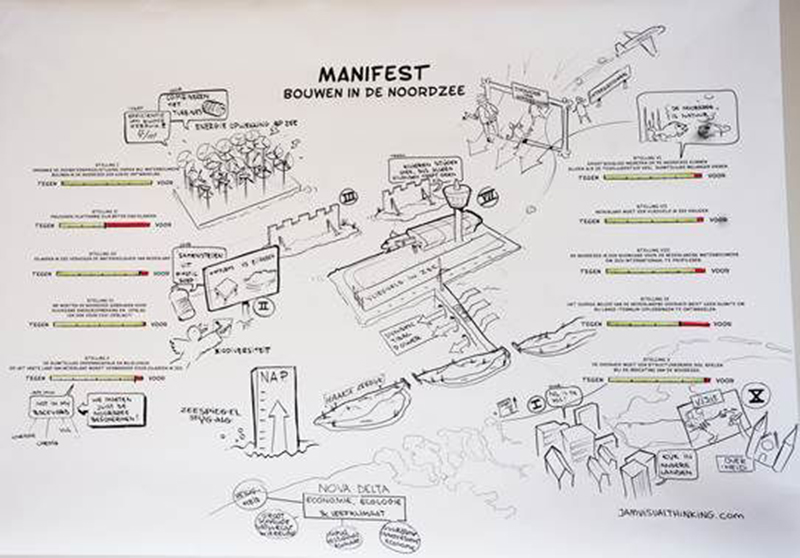
Energy island
The Waterbouwdag also has an annual prize for the best Bachelor thesis.

For higher education, it went to Niels de Vos (Rotterdam University of Applied Sciences). He carried out research at dredging company Van Oord into the digging of submarine cable trenches. A new technique makes it possible to drive a tracked vehicle over the seabed, while a sort of chainsaw digs a trench of one and a half to two metres deep. De Vos is now studying at Delft University of Technology.
Dogger bank is not the only option
For scientific education, the prize went to Stefan Gerrits. He studied the idea of an energy island, which grid operator TenneT is also promoting. That energy island makes it possible to construct wind farms much further from the coast, and forms a switch point between the power grids of countries bordering the North Sea, such as the UK, the Netherlands and Denmark. The issue is that, as a maternity ward for fish, the Dogger Bank is a Natura 2000 protected area. For his graduation, Gerrits also researched whether other locations on the North Sea are suitable for constructing such an energy island. And it turns out there are such options. ‘Although construction is more expensive, their location does generate greater yields. This means we're not dependent on the Dogger Bank for such an energy island.’
If you found this article interesting, subscribe for free to our weekly newsletter!
Opening image: design by Royal HaskoningDHV for an airport at sea.




